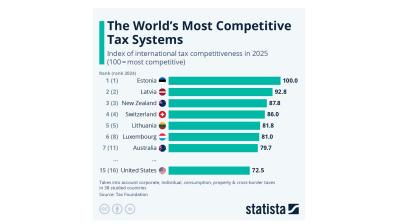The very high household saving rate in Czechia and the sharp fall in inflation we expect there this year means there is scope for consumer spending to recover over the coming quarters. But we think consumers will still exercise caution and that a euro-zone recession will weigh on the export sector. Our forecast for the Czech economy to contract by 0.5% in 2023 is below the consensus and central bank’s forecast.
The Czech economy slipped into technical recession in the second half of last year as GDP contracted by 0.3% quarter on quarter in Q3 and 0.4% q/q in Q4. While this weak performance was similar to elsewhere in Central and Eastern Europe, Czechia’s economy stands out as one in which the post-pandemic recovery has been very slow. Unlike in most other countries, GDP has failed to return to its pre-pandemic level.
The underperformance of the Czech economy can be pinned on weakness in household consumption, which has fallen for the past five consecutive quarters and is now 8% below its pre-pandemic level. This accounts for almost all of the post-pandemic divergence with other economies in the region.
This is partly a result of weak income growth. The latest household disposable income data (available until Q3 2022) show that real household income was slightly below its pre-pandemic level in Czechia, but above that in Hungary and Poland. More timely wage data show that nominal wage growth has been much weaker and that Czechia suffered a larger fall in real wages last year as inflation surged.

Real wage growth (% y/y, 3m average).
What’s more, the household saving rate has remained much higher in Czechia since the pandemic, perhaps as consumers have been relatively more cautious. The latest saving rate data (also available until Q3 2022) show that the Czech household saving rate was around 5%-ppts above its 2015-19 average. In contrast, the saving rate had fallen below its pre-pandemic average in Poland and Hungary.
One might assume that a consequence of the high household saving rate in Czechia is that consumers are sitting on a large stock of “excess” savings. Indeed, if you add up the flow of savings over and above the pre-pandemic trend, you might conclude that households are sitting on surplus savings equivalent to around 6% of GDP. But this overstates the actual amount of extra savings that are readily available to be spent, as it doesn’t adjust for funds invested in housing or financial assets or used to pay down debt.
Instead, if you consider savings held in households’ bank accounts (which are readily available), the amount of surplus savings appears much smaller – the nominal value of household deposits is only around 1.5% of GDP above its pre-pandemic trend. And once you take into account the sharp rise in inflation over the past year, the real value of households’ bank deposits is now below its pre-pandemic trend. There is no perfect way to measure excess savings, but (for what it’s worth) analysis by the Czech National Bank (CNB) also suggests that households’ “forced savings” since the pandemic are now more or less exhausted.
Even though households may not be sitting on a large stock of excess savings, a fall in the savings rate back to its long-run average could provide a boost to the economy, particularly as inflation falls this year and real incomes recover. But we doubt that consumers will increase their spending dramatically in the near term, not least because interest rates will remain high and confidence depressed. The small uptick in confidence in the past few months is still only consistent with a slight easing in the year-on-year rate of decline in consumption in Q1. In q/q terms, that suggests consumption will stagnate.
More worryingly, we think that a recession in the euro-zone economy will hit the Czech export sector and keep the economy weak. Admittedly, some of the activity data out of the euro-zone has been more resilient than expected lately, but the falls in output we anticipate over the rest of this year suggests that Czech export growth will slow from 10% y/y in Q4 to around -2% y/y in the coming quarters.
The overall upshot is that we don’t think that the recent weakness in the Czech economy sets the stage for a fast rebound in activity this year. We think that Czech GDP may fall slightly further over the first half of this year and we expect only a slow recovery in the second half. Our annual 2023 GDP growth forecast of -0.5% is below the consensus (0.0%) and CNB’s forecast (-0.3%).
Opinion

COMMENT: Europe’s “fake it till you make it” war approach cannot hold off Russia’s trillion dollar war machine
In their speeches on the war in Ukraine, European leaders appear like a video clip looped on repeat. Standing before the cameras they declare new packages of support for Kyiv and threaten new measures to pressure Russia as if it was still 2022.

A year after the Novi Sad disaster, Belgrade faces one crisis after another
Serbia’s government is grappling with a convergence of crises which threaten to erode President Aleksandar Vucic’s once-dominant position.

Don’t be fooled, Northern Cyprus’ new president is no opponent of Erdogan, says academic
Turkey’s powers-that-be said to have anticipated that Tufan Erhurman will pose no major threat.

COMMENT: Hungary’s investment slump shows signs of bottoming, but EU tensions still cast a long shadow
Hungary’s economy has fallen behind its Central European peers in recent years, and the root of this underperformance lies in a sharp and protracted collapse in investment. But a possible change of government next year could change things.



